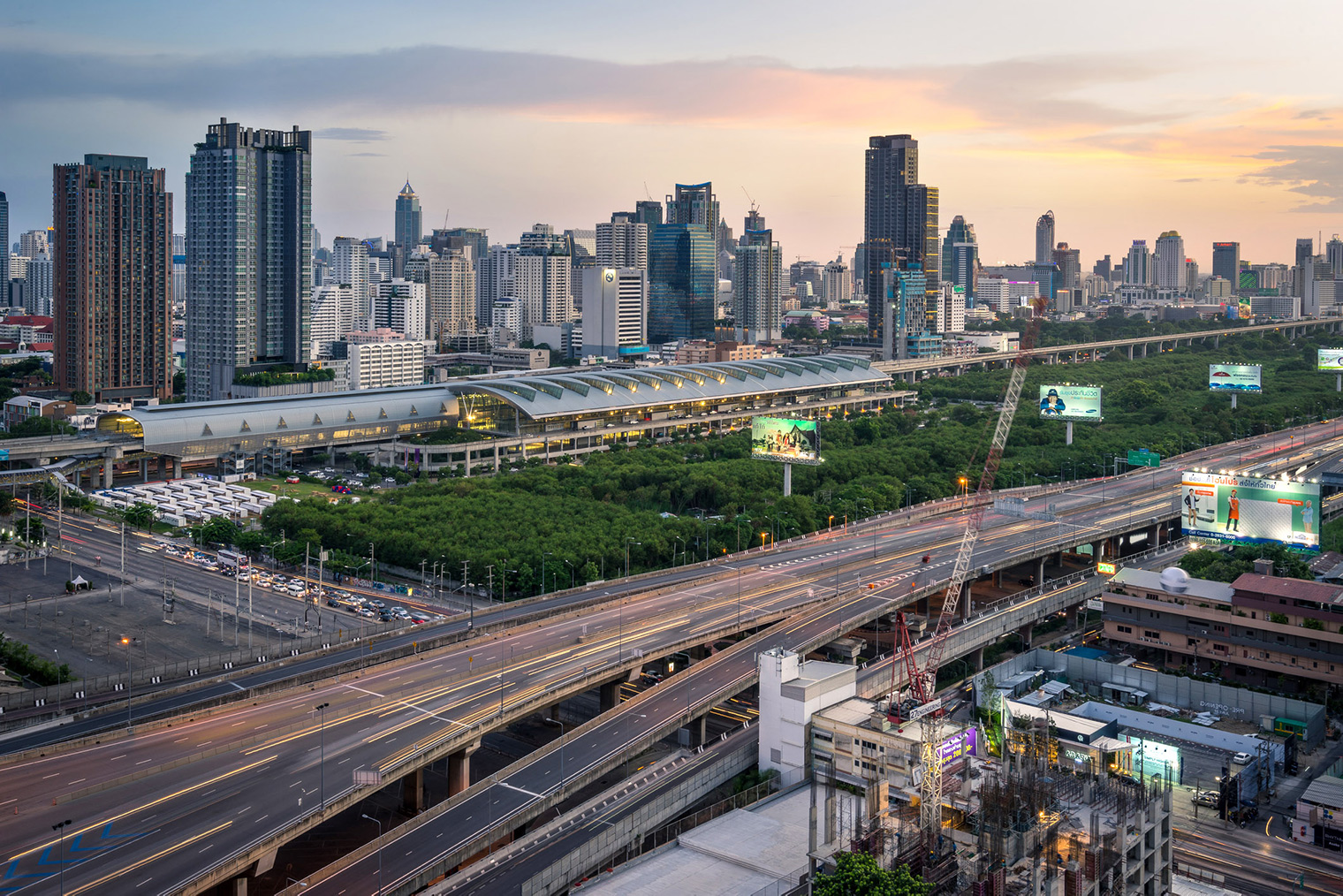- Article

- Global Research
- General Research Insights
India’s digital date
- India’s tech-focused sectors – “new India” – could push up growth to 6.5% per year and more than double the economy’s size in a decade
- But an even faster annual pace of 7.5% may be needed to create enough jobs. Is that possible?
- It will be hard work, but we believe it’s possible by lifting “old India” via a more ambitious use of digital infrastructure and reform
Will growth meet jobs?
In our latest report, we explore where India is heading in the next decade and why “new India” – a small but fast-growing part of the economy made up of high-tech sectors – is central to speeding up growth.
Scenario one: 6.5% annual growth over the next decade. This is our base case and faster than the 6% pace on the eve of the pandemic. It would more than double the size of the economy. Two new sectors, central to “new India”, excite us about the country’s medium-term growth prospects:
- One, India’s high-tech exports such as IT services, mobile handsets, drugs and pharmaceutical products have been gaining global market share since 2017, and have been the key driver of the country’s post-pandemic recovery.
- Two, on the back of India’s impressive digital public infrastructure roll out, tech start-ups have grown rapidly in recent years, attracting inflows and lifting up GDP growth.
Still, even this pace of growth isn’t enough to create all of the 70m new jobs needed over the next decade. In fact, it would generate just a third of them. This topic is especially in focus given India, as per the United Nations, has recently become the most populous country in the world.
70m
New jobs needed over the next decade
At the heart of the jobs problem are sluggish low-tech manufacturing and agriculture sectors. Too many manufacturing firms remain too small for too long, so never enjoy economies of scale or create many jobs. And while agriculture employs 46% of the labour force, it only produces 16% of economic output. So to get growth humming louder, both of these sectors – part of “old India” – need change.
Scenario two: 7.5% annual growth over the next decade. We lay out a case that if “old India” – which makes up 85% of the economy – can be energised by “new India,” overall GDP growth could accelerate to 7.5% per year. Importantly, this would solve two-thirds of India’s jobs problem over the next decade.
We believe such a shift can take place if tech start-ups, which are currently focused largely on services, become more ambitious and foray into the digitalisation of manufacturing and agritech.
Start-ups can use digital infrastructure to help clusters of small manufacturing firms enjoy the advantages of larger manufacturers. This is possible by providing them with access to cheaper inputs, larger final markets, new credit platforms, and digital quality checks. Similarly, technological innovation can help solve problems in the agricultural sector. Some of these changes, like easier access to credit, are already happening, but need to scale up.
Technological innovations can help solve problems in the agricultural sector.
Some may wonder how digitalisation will create more jobs than it eliminates through technology advances. We find that by opening up opportunities like better access to new markets, digitalisation can increase GDP growth by more than it raises labour productivity, leading to net job creation.
But important conditions need to be fulfilled for faster growth. More economic reforms are needed. True, applications arising out of digital infrastructure can act as a temporary substitute for reforms. For instance, manufacturing digitalisation can simulate scale for small firms. But don’t be fooled. For large and sustainable gains, real reforms are necessary. An example is that for agri e-commerce firms to reach scale, a more market-friendly legal framework is needed. And then there are challenges around reviving domestic capital expenditure, as well as improving education and employability.
With India likely to grow at 6.5-7.5%, the structure of the economy will change – “new India” will make up a quarter of the economy by 2032, from just 15% in 2018. The industrial sector will be larger, the agricultural sector smaller, and the services sector relatively big for an emerging market.
India will also stand out in the global horizon as a major economy which transitions to upper-middle income status with a relatively small share of industry and a relatively large share of services. Here, India can benefit from the recent trend of globalisation continuing for services, even as global trade in goods has slowed.
India’s economy is poised to more than double from USD3.4trn in 2022 to USD7.5trn by 2032f if real growth averages 6.5% a year, but could hit USD8trn by 2032 if growth increases to 7.5% a year.
Before that, India is on track to become the world’s third-largest economy in the next few years, behind the US and China. And an increase in per capita income will mean the country will likely cross over from being a lower middle-income country to obtaining upper-middle income status by the start of the next decade.
There’s a time for everyone. If it plays its cards well, now’s the time for India.
Would you like to find our more? Click here* to read a free to view version of the report.
To find out more about HSBC Global Research or to become a subscriber get in touch at askresearch@hsbc.com.
*Please note that by clicking on this link you are leaving the HSBC Global Banking & Markets Website, therefore please be aware that the external site policies will differ from our website terms and conditions and privacy policy. The next site will open in a new browser window or tab.
The following analyst(s), who is(are) primarily responsible for this document, certifies(y) that the opinion(s), views or forecasts expressed herein accurately reflect their personal view(s) and that no part of their compensation was, is or will be directly or indirectly related to the specific recommendation(s) or views contained in this research report: Pranjul Bhandari and Aayushi Chaudhary
This document has been issued by the Research Department of HSBC.
HSBC and its affiliates will from time to time sell to and buy from customers the securities/instruments, both equity and debt (including derivatives) of companies covered in HSBC Research on a principal or agency basis or act as a market maker or liquidity provider in the securities/instruments mentioned in this report.
Analysts, economists, and strategists are paid in part by reference to the profitability of HSBC which includes investment banking, sales & trading, and principal trading revenues.
Whether, or in what time frame, an update of this analysis will be published is not determined in advance.
For disclosures in respect of any company mentioned in this report, please see the most recently published report on that company available at www.hsbcnet.com/research.
Additional disclosures
- This report is dated as at 09 May 2023.
- All market data included in this report are dated as at close 04 May 2023, unless a different date and/or a specific time of day is indicated in the report.
- HSBC has procedures in place to identify and manage any potential conflicts of interest that arise in connection with its Research business. HSBC's analysts and its other staff who are involved in the preparation and dissemination of Research operate and have a management reporting line independent of HSBC's Investment Banking business. Information Barrier procedures are in place between the Investment Banking, Principal Trading, and Research businesses to ensure that any confidential and/or price sensitive information is handled in an appropriate manner.
- You are not permitted to use, for reference, any data in this document for the purpose of (i) determining the interest payable, or other sums due, under loan agreements or under other financial contracts or instruments, (ii) determining the price at which a financial instrument may be bought or sold or traded or redeemed, or the value of a financial instrument, and/or (iii) measuring the performance of a financial instrument or of an investment fund.
This document has been issued by HSBC Securities and Capital Markets (India) Private Limited, which has based this document on information obtained from sources it believes to be reliable but which it has not independently verified. Neither HSBC Securities and Capital Markets (India) Private Limited nor any member of its group companies (“HSBC”) make any guarantee, representation or warranty nor accept any responsibility or liability as to the accuracy or completeness of this document and is not responsible for errors of transmission of factual or analytical data, nor is HSBC liable for damages arising out of any person’s reliance on this information. The information and opinions contained within the report are based upon publicly available information at the time of publication, represent the present judgment of HSBC and are subject to change without notice.
This document is not and should not be construed as an offer to sell or solicitation of an offer to purchase or subscribe for any investment or other investment products mentioned in it and/or to participate in any trading strategy. It does not constitute a prospectus or other offering document. Information in this document is general and should not be construed as personal advice, given it has been prepared without taking account of the objectives, financial situation or needs of any particular investor. Accordingly, investors should, before acting on it, consider the appropriateness of the information, having regard to their objectives, financial situation and needs. If necessary, seek professional investment and tax advice.
The decision and responsibility on whether or not to purchase, subscribe or sell (as applicable) must be taken by the investor. In no event will any member of the HSBC group be liable to the recipient for any direct or indirect or any other damages of any kind arising from or in connection with reliance on any information and materials herein.
Past performance is not necessarily a guide to future performance. The value of any investment or income may go down as well as up and you may not get back the full amount invested. Where an investment is denominated in a currency other than the local currency of the recipient of the research report, changes in the exchange rates may have an adverse effect on the value, price or income of that investment. In case of investments for which there is no recognised market it may be difficult for investors to sell their investments or to obtain reliable information about its value or the extent of the risk to which it is exposed. Some of the statements contained in this document may be considered forward looking statements which provide current expectations or forecasts of future events. Such forward looking statements are not guarantees of future performance or events and involve risks and uncertainties. Actual results may differ materially from those described in such forward-looking statements as a result of various factors.
This document is for information purposes only and may not be redistributed or passed on, directly or indirectly, to any other person, in whole or in part, for any purpose. The distribution of this document in other jurisdictions may be restricted by law, and persons into whose possession this document comes should inform themselves about, and observe, any such restrictions. By accepting this report, you agree to be bound by the foregoing instructions. If this report is received by a customer of an affiliate of HSBC, its provision to the recipient is subject to the terms of business in place between the recipient and such affiliate. The document is intended to be distributed in its entirety. Unless governing law permits otherwise, you must contact a HSBC Group member in your home jurisdiction if you wish to use HSBC Group services in effecting a transaction in any investment mentioned in this document.
Certain investment products mentioned in this document may not be eligible for sale in some states or countries, and they may not be suitable for all types of investors. Investors should consult with their HSBC representative regarding the suitability of the investment products mentioned in this document.
HSBC and/or its officers, directors and employees may have positions in any securities in companies mentioned in this document. HSBC may act as market maker or may have assumed an underwriting commitment in the securities of companies discussed in this document (or in related investments), may sell or buy securities and may also perform or seek to perform investment banking or underwriting services for or relating to those companies and may also be represented on the supervisory board or any other committee of those companies.
From time to time research analysts conduct site visits of covered issuers. HSBC policies prohibit research analysts from accepting payment or reimbursement for travel expenses from the issuer for such visits.
HSBC Securities and Capital Markets (India) Private Limited is registered as ""Research Analyst"" (Reg No. INH000001287), Merchant Banker (Reg No. INM000010353) and Stock Broker (Uniform Reg. No. INZ000234533) and regulated by the Securities and Exchange Board of India.
© Copyright 2023, HSBC Securities and Capital Markets (India) Private Limited, ALL RIGHTS RESERVED. No part of this publication may be reproduced, stored in a retrieval system, or transmitted, on any form or by any means, electronic, mechanical, photocopying, recording, or otherwise, without the prior written permission of insert issuing entity name. MCI (P) 017/01/2023, MCI (P) 027/10/2022
Global Research
HSBC Global Research provides information, insights and thought-provoking ideas.




